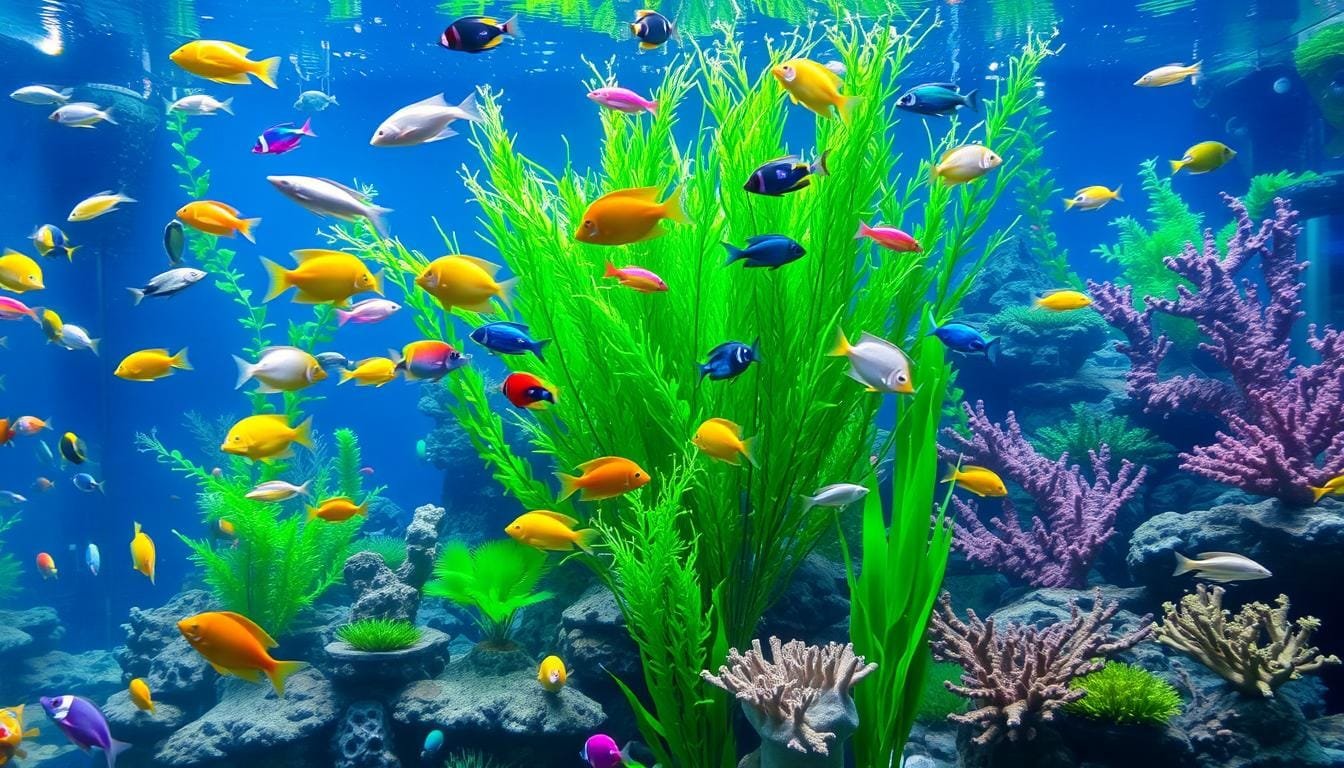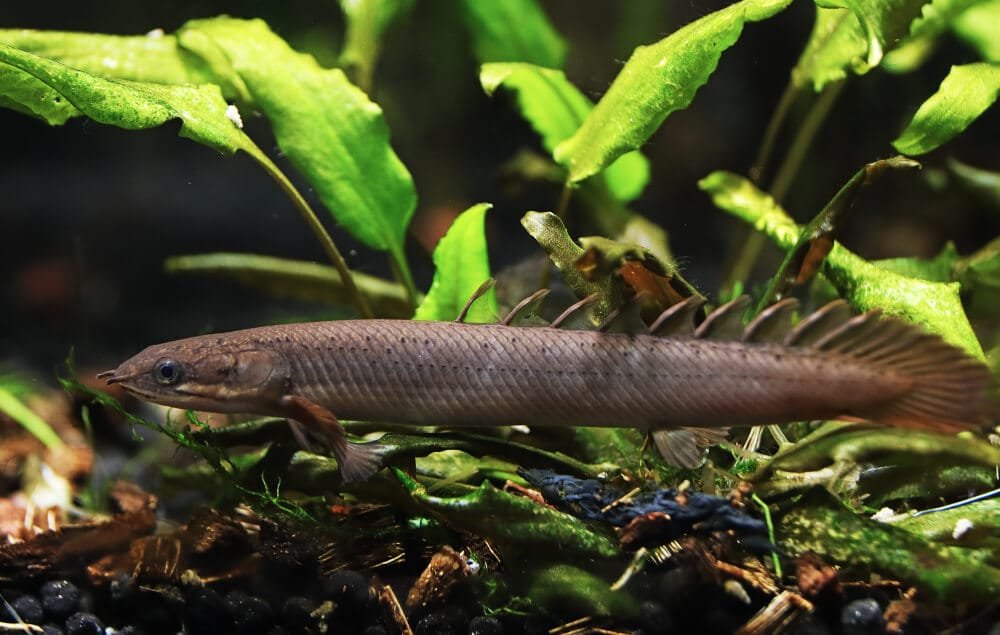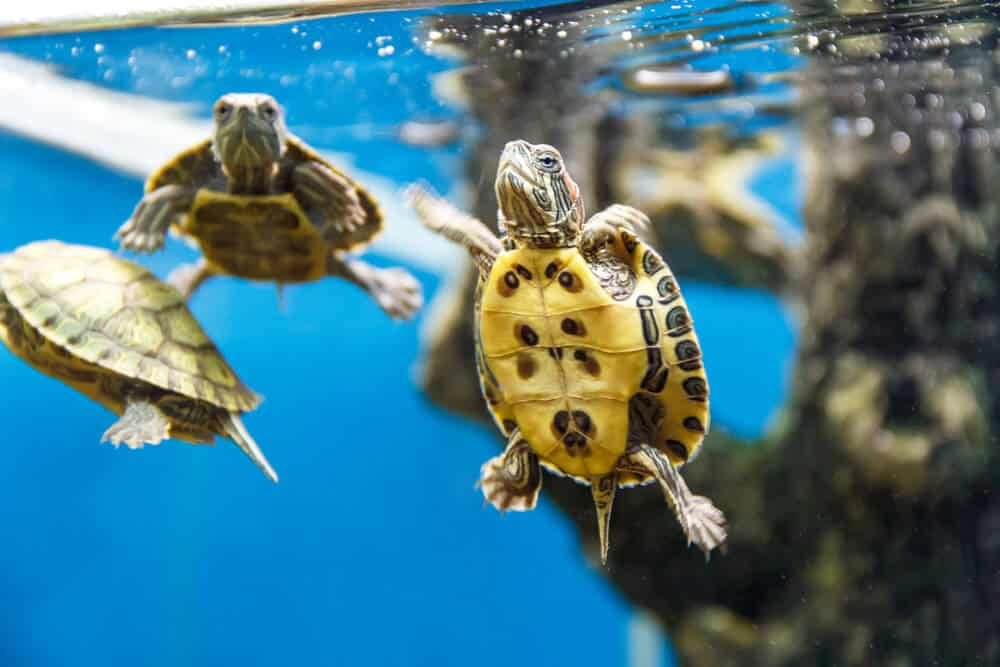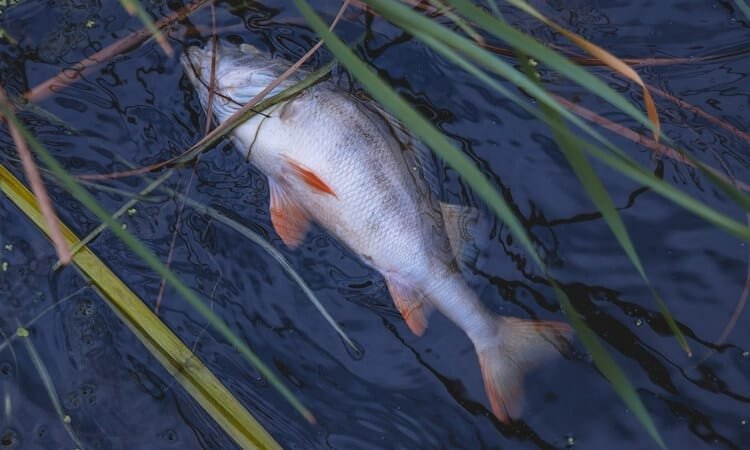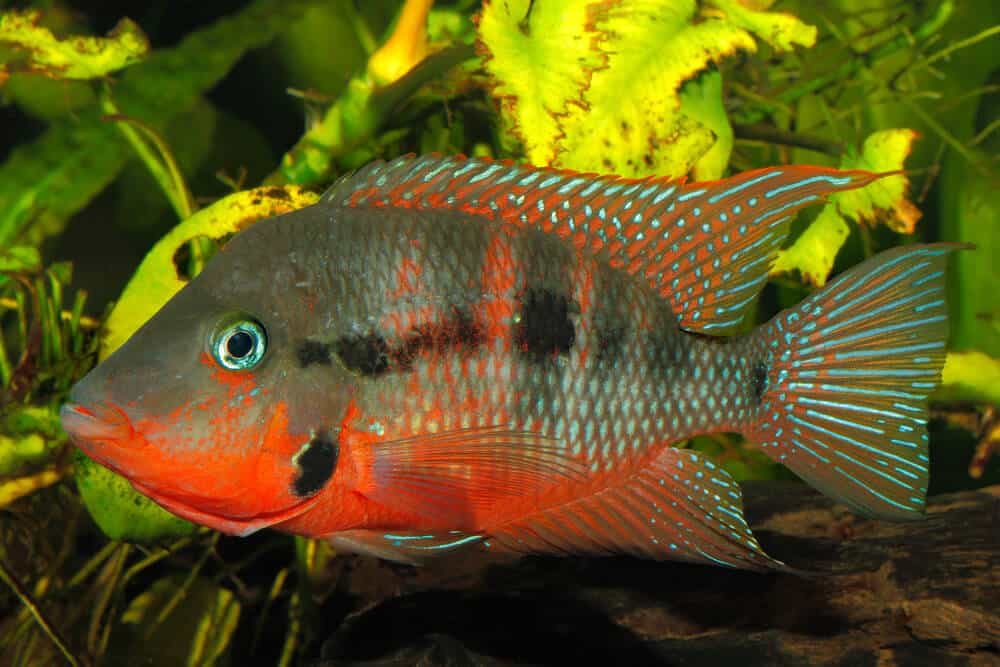Exotic fish bring life and beauty to any home. Their vibrant colors and unique personalities captivate many. However, these creatures need special care to thrive in your aquarium.
Exotic fish are sensitive to small changes in their environment. Keeping them healthy involves more than just feeding and changing water. You need to understand water composition, temperature, and beneficial bacteria balance.
Freshwater aquariums need a pH between 6.5 and 7.5. Marine tropical fish prefer 8.0 to 8.3. The ideal temperature for freshwater tropical fish is 76-80°F.
Neglecting these factors can stress or kill your fish. Regular water testing and behavior monitoring are crucial. Maintain a consistent cleaning schedule, but avoid overcleaning.
Overcleaning can disrupt beneficial bacteria in the tank. These bacteria break down fish waste and keep water clean. Balance is key in maintaining a healthy aquarium.
Choose fish based on size, temperament, and compatibility with other species. Beginners should start with at least a 20-gallon tank. A 30-gallon tank is even better.
Larger tanks give fish more space to swim and explore. This helps them establish their territories and stay healthy. Caring for exotic fish requires dedication and knowledge.
Creating a thriving underwater world is rewarding. With proper care, your tropical aquarium can bring joy and peace to your home.
Understanding the Unique Needs of Exotic Fish
Exotic fish species offer a rewarding experience but come with unique challenges. They often need specific environments, water conditions, and diets. Neglecting these needs can harm their health and lifespan.
Research the natural history and care needs of exotic fish species. Learn about their preferred water temperature and pH range. Tropical fish like 72-82°F water, while coldwater fish prefer under 72°F.
Recognizing the Challenges of Keeping Exotic Fish
Providing the right aquarium size is crucial for exotic fish. A good rule is one gallon per inch of fish. Some species may need more space due to activity or territory.
Maintaining water quality is vital. Test pH, ammonia, nitrites, and nitrates regularly. Keep these levels within safe ranges to avoid potential hazards.
| Parameter | Ideal Range |
|---|---|
| pH | 6.5-8.0 |
| Ammonia | 0 ppm |
| Nitrites | 0 ppm |
| Nitrates | Under 40 ppm |
Researching the Specific Requirements of Your Exotic Fish Species
Understand the nutritional needs and social compatibility of your exotic fish. Some need special diets like live or frozen foods. Others may prefer schooling or solitary living.
Keeping exotic fish requires long-term dedication and responsibility. Research their needs thoroughly to ensure their welfare. With proper care, you’ll enjoy a thriving aquarium for years.
Setting Up the Ideal Aquarium Environment
Creating a perfect home for exotic fish requires careful planning. The aquarium setup affects your aquatic pets’ health and well-being. Fish thrive in horizontal aquariums, which support healthy behavior.
Choosing the Right Aquarium Size and Shape
Select an aquarium based on water volume and surface area needed for your fish species. Aquariums should be at least 5 gallons, even for small fish like bettas.
A gallon of water weighs about 8 pounds, affecting tank placement. Tanks over 5 gallons need an aquarium stand or industrial shelving unit.
Selecting Appropriate Lighting and Filtration Systems
Ambient light and supplemental lighting maintain a healthy aquatic environment. Direct sunlight promotes algae growth, which can stress fish.
Proper filtration is crucial for all aquariums. Common types include sponge filters, hang-on-back filters, and canister filters. These systems help maintain water quality and oxygen levels.

Creating a Naturalistic Habitat with Plants, Structures, and Substrate
Environmental enrichment promotes natural behaviors and reduces stress in exotic fish. Use live plants and aquarium decor to create hiding spots and encourage exploration.
Choose a substrate larger than your fish’s mouth to avoid fatal obstructions. A well-designed habitat supports the nitrogen cycle, crucial for maintaining water quality.
| Aquarium Size (Gallons) | Recommended Fish Species | Filtration Type |
|---|---|---|
| 5-10 | Bettas, Guppies, White Cloud Mountain Minnows | Sponge Filter, Hang-on-Back Filter |
| 10-20 | Neon Tetras, Zebra Danios, Cherry Barbs | Hang-on-Back Filter, Canister Filter |
| 20-40 | Gourami, Platies, Swordtails | Canister Filter |
| 40+ | Angelfish, Discus, Rainbowfish | Canister Filter, Sump System |
A well-designed aquarium is not just a beautiful addition to your home; it is a thriving ecosystem that supports the health and happiness of your exotic fish.
Consider the unique needs of your fish species when creating their environment. This ensures your aquatic pets thrive in their new home.
Maintaining Optimal Water Quality
Exotic fish need clean water to thrive. Good water chemistry is key for a healthy aquarium. Regular maintenance prevents harmful toxin buildup.
Monitor ammonia, nitrite, nitrate, pH, KH, and GH levels closely. This helps create a balanced ecosystem for your exotic fish.
The Importance of Regular Water Testing
Test your aquarium water often to catch problems early. Use a reliable liquid test kit to check key parameters.
| Parameter | Ideal Level |
|---|---|
| Ammonia | < 0.1 ppm |
| Nitrite | < 0.2 ppm |
| Nitrate | < 50 ppm |
| pH | 6.5 to 7.5 |
Test water every 2-3 days during the first 6 weeks. After that, test every 1-2 weeks to maintain stable conditions.
Performing Necessary Water Changes
Change 10-25% of tank water weekly. This removes waste and keeps the aquarium healthy.
Use a gravel vacuum to clean the substrate. Treat new water with dechlorinator to remove harmful chemicals.
Make sure new water matches the tank’s temperature and chemistry.
- Use a gravel vacuum to remove debris from the substrate
- Treat new water with a dechlorinator to remove harmful chlorine and chloramine
- Ensure the temperature and chemistry of the new water match the existing tank water
Ensuring Proper Aquarium Cycling
A mature nitrogen cycle breaks down toxic ammonia and nitrite. Beneficial bacteria in the filter and substrate do this work.
Add fish slowly to avoid overloading the system. Provide space for bacteria to grow. Watch ammonia and nitrite levels closely.
- Introduce fish gradually to avoid overloading the system
- Provide ample surface area for beneficial bacteria growth
- Monitor ammonia and nitrite levels closely, performing extra water changes if necessary
A typical aquarium setup will involve using a filtration system to break down levels of ammonia and nitrites to a safe level.
Regular testing, water changes, and proper cycling create a thriving environment. This helps your exotic fish stay healthy and happy.
Providing a Balanced and Nutritious Diet
Exotic fish need a well-balanced diet for their health and vitality. Each species has unique nutritional needs. These can be met through live food, frozen food, and high-quality commercial fish food.
Understanding your fish’s feeding habits is crucial for their well-being. Consider species-specific dietary requirements when planning their meals.
- Species-specific dietary requirements
- Variety in food sources (live, frozen, and commercial)
- Frequency and portion sizes based on fish size and age
- Nutritional balance of proteins, lipids, carbohydrates, vitamins, and minerals
Research shows that exotic fish diets can vary widely, with about 60% of species requiring varied diets including live, frozen, and high-quality commercial foods to ensure nutritional balance.
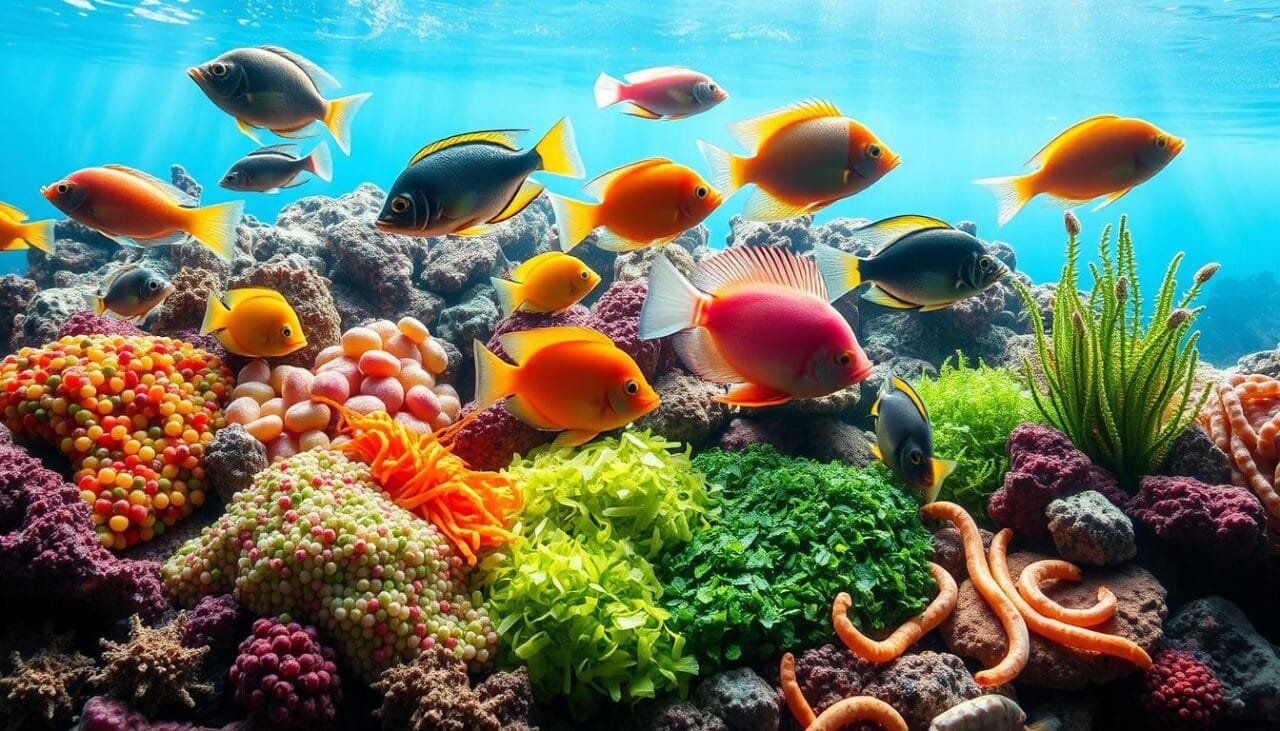
Overfeeding is a common issue among exotic fish owners. It can lead to health problems and poor water quality. Uneaten food can release harmful toxins and promote algae growth.
To prevent overfeeding, follow these guidelines:
| Fish Size | Feeding Frequency | Portion Size |
|---|---|---|
| Small (less than 2 inches) | 2-3 times per day | Amount consumed within 2-3 minutes |
| Medium (2-4 inches) | 1-2 times per day | Amount consumed within 3-5 minutes |
| Large (over 4 inches) | Once per day | Amount consumed within 5-7 minutes |
A study indicated that around 40% of exotic fish owners do not research the specific care needs prior to purchasing their fish, resulting in compatibility issues among tank mates.
A balanced diet and proper feeding habits ensure your exotic fish’s health. Research your fish’s specific needs for the best care.
Consult experienced aquarists or exotic pet vets for personalized advice. This will help maintain optimal water quality and your fish’s longevity.
Preventing and Treating Common Health Issues
Exotic fish can suffer from various health problems. These include parasitic, bacterial, and fungal infections. Early detection and prevention are key to keeping your aquatic pets healthy.
Understanding common health issues helps create a thriving aquarium. Implementing preventive measures ensures your fish stay vibrant and healthy.
Recognizing Signs of Disease or Stress
Watch for behavioral changes, physical abnormalities, and appetite loss in your fish. These can signal potential health problems. Key indicators include:
- Abnormal swimming patterns, such as lethargy, erratic movements, or difficulty maintaining buoyancy
- Visible lesions, ulcers, or discoloration on the skin or fins
- Increased mucus production or the appearance of white, cottony patches on the body
- Rapid breathing or gasping at the water’s surface
- Loss of appetite or refusal to eat
Observe your fish regularly to learn their normal behavior. This helps you spot any changes that might indicate health issues quickly.
Implementing Quarantine Procedures for New Fish
Quarantine new fish for 2-4 weeks before adding them to your main tank. This prevents introducing diseases to your established aquarium.
Use a separate tank to watch new arrivals for signs of illness. Treat them if needed before introducing them to your main aquarium.
Seeking Veterinary Care When Necessary
For severe or ongoing health issues, consult an experienced exotic animal vet. They can diagnose problems and recommend proper treatments. Vets can also guide you in giving medications correctly.
Here are some common fish diseases and their treatments:
| Disease | Cause | Treatment |
|---|---|---|
| Aeromonas infection | Aeromonas bacteria | Antibiotics based on laboratory testing |
| Saprolegniasis | Saprolegnia fungus | Potassium permanganate, improved sanitation |
| Mycobacteriosis | Mycobacterium bacteria | Difficult to treat, often requires euthanasia |
| Edwardsiellosis | Edwardsiella bacteria | Antibiotics, improved water quality |
Prevention is crucial for a healthy aquarium. Test water parameters and change water regularly. Provide a balanced diet to boost your fish’s immune system.
Stay watchful and proactive in your fish care routine. This creates a thriving environment for your exotic aquatic friends.
Selecting Compatible Tankmates
Creating a thriving community aquarium requires careful consideration of each exotic fish’s needs. Understanding species-specific requirements and social behavior is key. This ensures a harmonious environment and prevents fish stress or territorial aggression.
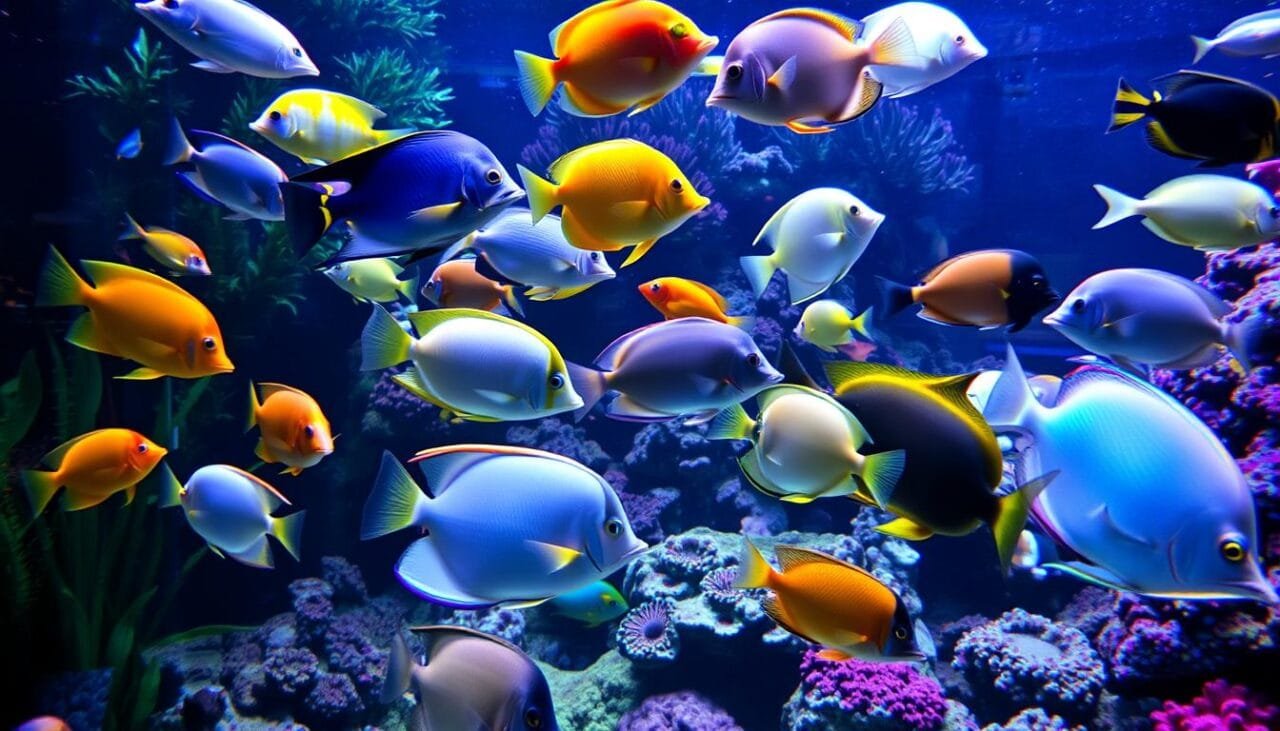
Understanding the Social Needs of Different Species
Research each fish’s natural social behavior before adding them to your aquarium. Schooling fish thrive in groups of six or more. Territorial cichlids need more space and may not get along with similar species.
Live-bearing fish, like guppies and platys, require a specific gender ratio. Keep 2-3 females per male to reduce aggressive mating behaviors.
| Fish Species | Social Requirements |
|---|---|
| Schooling Fish (e.g., Tetras, Rasboras) | Groups of 6 or more |
| Territorial Fish (e.g., Cichlids) | Ample space, similar-sized tankmates |
| Live-bearing Fish (e.g., Guppies, Platys) | 2-3 females per male |
Avoiding Overcrowding and Aggression
To prevent overcrowding, follow the one-inch-per-gallon rule for adult fish. Add new fish similar in size to the most aggressive ones already present. This helps minimize territorial aggression.
Rearrange decorations to reduce territorial disputes. This can create a more peaceful environment for all fish.
“The key to a successful community aquarium is understanding the unique needs and behaviors of each species and providing them with the space and companionship they require to thrive.” – Aquarium Expert
Careful selection of tankmates and proper aquarium stocking creates a diverse, thriving community. This allows exotic fish to showcase their natural behaviors and beauty.
Maintaining a Regular Cleaning and Maintenance Schedule
Clean and well-maintained aquariums are vital for healthy exotic fish. Regular aquarium maintenance prevents toxin buildup and controls algae growth. A consistent cleaning schedule creates a thriving environment for your aquatic pets.
Weekly water changes are crucial for aquarium upkeep. Replace 20-25% of the tank’s water with fresh dechlorinated water. This removes waste, uneaten food, and debris that harm water quality.
Vacuum the gravel during water changes to remove trapped particles. This prevents harmful bacteria growth and maintains a clean tank bottom.
Monitor and maintain proper water parameters for your fish. Tropical fish prefer temperatures between 24 to 27°C. They thrive in pH levels of 5.5 to 7.5 and nitrite levels of 0 to 0.5 ppm.
Test water regularly to track these parameters. Start with weekly tests, then move to fortnightly once the tank stabilizes. Adjust conditions as needed to keep your fish healthy.
Filter maintenance is key to aquarium hygiene. Filters remove debris, oxygenate water, and promote beneficial bacteria growth. Inspect and maintain your filter monthly, replacing media as needed.
Avoid replacing all filter material at once. This can disrupt the balance of beneficial bacteria in your tank.
| Maintenance Task | Frequency |
|---|---|
| Water changes (20-25%) | Once a week |
| Gravel vacuuming | Once a week during water changes |
| Water parameter testing (initially) | Weekly |
| Water parameter testing (established tank) | Fortnightly |
| Filter inspection and maintenance | Monthly |
Control algae growth to keep your tank clean. Remove algae from walls, decor, and plants regularly. Use an algae scraper or magnetic cleaner gently to avoid disturbing fish or damaging the tank.
Regular maintenance ensures a healthy habitat for your exotic fish. A well-kept aquarium enhances beauty and promotes the well-being of your aquatic pets.
Providing Appropriate Environmental Enrichment
Exotic fish need enrichment that mimics their natural habitats. This promotes mental and physical well-being. Offer various aquarium decor, plants, and structures to encourage natural behaviors.
These elements reduce stress and aggression. They also promote overall fish well-being. Fish can forage, explore, and find hiding spots in a well-designed tank.
Offering Variety in Decor and Hiding Spots
Create a diverse and stimulating environment for your exotic fish. Use live plants, rocks, driftwood, and ornaments that resemble natural habitats. Strategically place rocks and driftwood to create hiding spots and visual barriers.
This setup reduces stress and aggression among tankmates. Consider these factors when selecting decor:
- Choose plants and ornaments that are safe for your specific fish species
- Ensure all decor is securely placed to prevent accidents or injuries
- Avoid overcrowding the tank, as this can lead to poor water quality and increased stress
Encouraging Natural Foraging and Exploratory Behaviors
Promote natural foraging and exploratory behaviors through various enrichment techniques. Offer different food sources and feeding methods, such as:
- Hiding food within the aquarium decor to encourage foraging
- Providing live or frozen foods to mimic natural prey
- Using feeding puzzles or dispensers to stimulate problem-solving skills
Rotate or introduce new decor elements periodically. This keeps the environment stimulating and engaging. It prevents boredom and promotes mental stimulation for your fish.
Research indicates that fish demonstrate physiologic and behavioral responses to fear and stress, and they are capable of forming long-term memories.
Prioritize environmental enrichment in your exotic fish care routine. This can significantly improve their overall well-being. It helps them thrive in captivity.
Care for Exotic Fish Species
Exotic fish need special care based on their unique requirements. Create a thriving environment by tailoring your aquarium management to each species. This species-specific approach promotes fish health and well-being.
Stay informed about the latest fish care research and guidelines. Connect with experienced aquarists and seek veterinary advice when needed. Join fishkeeping communities to expand your knowledge of exotic fish husbandry.
Tailoring Care to the Specific Needs of Each Species
Exotic fish species have different needs for water, diet, and habitat. Most tropical fish thrive in temperatures between 24-27°C (75-80°F). They prefer a pH range of 6.8 to 7.6, but this can vary.
Research your fish’s specific needs to create a natural-like environment. This approach helps your exotic fish flourish in their new home.
| Fish Care Aspect | Recommendations |
|---|---|
| Water Temperature | 24-27°C (75-80°F) for most tropical fish |
| pH Range | 6.8-7.6 for most tropical fish, varies by species |
| Tank Size (Beginners) | 30-60 cm in length |
| Lighting | Critical for plant and fish health; LED and fluorescent options available |
| Filtration | Necessary for removing toxins like ammonia and nitrite |
Staying Up-to-Date on the Latest Care Guidelines and Research
Our understanding of exotic fish care is always growing. Stay informed about new research and best practices. Consult online resources and attend courses to improve your fish care skills.
The key to successful exotic fish husbandry is a commitment to ongoing learning and a willingness to adapt your care practices as new information becomes available.
Provide species-specific care and stay current on guidelines. This approach creates a thriving aquarium for your exotic fish. Your fish will be healthy and happy for years to come.
Conclusion
Caring for exotic fish requires understanding their unique needs. This includes setting up the right environment and maintaining water quality. Providing a balanced diet and preventing health issues are also crucial for responsible fishkeeping.
Aquarist knowledge has grown significantly over the past 30 years. Many guidelines now exist for the care of laboratory and research fish. These resources help fishkeepers provide better care for their aquatic pets.
Selecting compatible tankmates is important for fish well-being. Regular cleaning and environmental enrichment encourage natural behaviors. Recent studies show fish may have nociceptive abilities and self-recognition.
Fishkeepers must stay informed about the latest care guidelines. This knowledge ensures the health and longevity of their aquatic pets. Species-specific welfare assessments are becoming more important in fish care.
Exotic fish species can increase production rates and disease resistance. However, it’s crucial to consider potential ecological impacts. Invasive species have caused significant ecosystem changes, costing billions annually.
Responsible fishkeeping involves more than individual fish care. It also means being mindful of broader environmental implications. Introducing non-native species can have far-reaching consequences on local ecosystems.
Dedication to research and maintenance creates thriving aquatic communities. Fishkeeping is rewarding but requires long-term commitment to these fascinating creatures. By embracing responsible practices, enthusiasts ensure their fish’s health and happiness.
Staying informed helps preserve native aquatic ecosystems. Fishkeepers can enjoy their hobby while contributing to environmental conservation. This balance creates a fulfilling experience for both the keeper and their exotic fish.
FAQ
How often should I test the water quality in my exotic fish aquarium?
Test your exotic fish aquarium water weekly. Check ammonia, nitrite, nitrate, pH, KH, and GH levels. Use a reliable liquid test kit to spot issues early.
Regular testing helps prevent stress and disease in your fish. Stick to a consistent schedule for the best results.
What should I consider when selecting an aquarium size and shape for my exotic fish?
Choose horizontal, rectangular tanks with plenty of surface area for your exotic fish. These tanks are easier to maintain and provide better oxygenation. Consider the adult size and activity level of your fish species.
Provide at least 1 gallon of water per inch of fish. Research your specific fish species to ensure they have enough space.
How can I create a naturalistic habitat for my exotic fish?
Add live plants, structures, and suitable substrate to mimic your fish’s natural environment. Research your fish species’ native habitats and choose decor accordingly.
Include hiding spots, visual barriers, and open swimming areas. Use sand, gravel, or planted soil based on your fish and plants’ needs.
Avoid overcrowding and ensure proper lighting for plant growth. This creates a healthy environment for your exotic fish.
What are some signs that my exotic fish may be stressed or ill?
Watch for changes in behavior, appearance, or appetite in your exotic fish. Look for lethargy, hiding, color loss, rapid breathing, or clamped fins.
Other signs include white spots, fuzzy growths, or red streaks on the body. Abnormal swimming, loss of appetite, or a swollen belly are also concerns.
If you notice these signs, check water quality and tankmates. Consult a vet for proper diagnosis and treatment.
How can I prevent the introduction of diseases when adding new exotic fish to my aquarium?
Quarantine new exotic fish for 2-4 weeks before adding them to your main tank. Watch for signs of illness during this time.
Treat any health issues before introducing new fish. Keep good water quality and avoid overcrowding in your main tank.
Provide a balanced diet to support your fish’s immune system. These steps help minimize disease risks in your aquarium.
What should I feed my exotic fish to ensure a balanced and nutritious diet?
Research your exotic fish species’ dietary needs and offer a variety of foods. Use high-quality commercial foods like flakes, pellets, and freeze-dried options.
Add live or frozen foods such as brine shrimp and bloodworms. Include vegetable matter for herbivorous fish. Avoid overfeeding to prevent health issues.
Remove uneaten food promptly to maintain a clean tank. This balanced approach ensures proper nutrition for your fish.
How often should I perform water changes in my exotic fish aquarium?
Change 10-25% of your tank water weekly. This removes waste and maintains a balanced ecosystem. Heavily stocked tanks may need more frequent changes.
Use a gravel vacuum to clean the substrate. Replace removed water with dechlorinated, temperature-matched water. Regular changes prevent harmful toxin buildup.
How can I provide environmental enrichment for my exotic fish?
Create a varied environment with decor, plants, and structures that mimic natural habitats. This encourages foraging, hiding, and exploration in your fish.
Use live plants, driftwood, rocks, and caves for a stimulating setup. Provide hiding spots and visual barriers to reduce stress.
Rotate decor and add new elements regularly. This keeps the environment engaging for your exotic fish.
What should I do if I suspect my exotic fish is sick or injured?
Isolate the sick or injured fish in a quarantine tank immediately. Observe closely and note any symptoms or abnormalities.
Research the possible disease based on symptoms. Consult an experienced exotic animal vet for diagnosis and treatment.
Follow the vet’s advice for medication and water quality adjustments. Maintain good quarantine practices to prevent future outbreaks.
How can I ensure the long-term health and well-being of my exotic fish?
Research your fish species’ needs and provide an optimal environment. Offer suitable tankmates and a balanced diet. Maintain excellent water quality through testing and changes.
Monitor your fish daily for stress or illness signs. Address issues promptly. Provide enrichment and minimize stress factors.
Stay informed about care guidelines and seek expert advice. Dedicate time and resources to create a thriving aquatic community.
